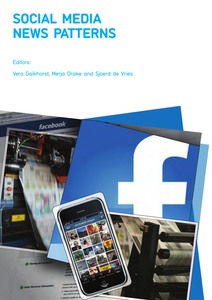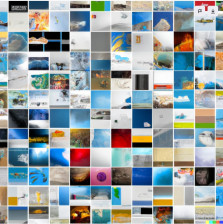Turkey has received consistent criticism from international media for having many naturalized athletes in its national squad, both in the Olympic Games and other major international sporting events. Similar criticisms have also been a feature of debates for a long time in domestic media, varying in views toward these athletes. This research focuses on media representations of naturalized athletes in Turkey between 2008 and 2020. We investigated the sentiments of news items from four major Turkish newspapers (Milliyet, Cumhuriyet, Sabah and Fanatik) on their stances toward naturalized athletes over the timespan of 2008–2020. Beside analyzing the sentiment of the media content both cumulatively and fragmentedly, we also identified the yearly trends and most featured sports in this context, combining qualitative and quantitative techniques. Our findings showed that sentiments in Turkish media toward naturalized athletes are mostly neutral and negative as well as with differences varying on the basis of the newspapers and news item types. The most criticism underlined pursuing “shortcut” success with naturalized athletes representing Turkey in the international arena. Among the featured sports, basketball, football, and track and field have been the most discussed ones in the naturalization context.
DOCUMENT

This PhD research project is about how Dutch development NGOs use social media for their development projects. For this, the following research question has been investigated: how do Dutch development NGOs use social media to further the development activities of their organisations? The purpose of this study is to understand how development NGOs are trying to get to grips with social media. Given the exploratory nature of this research, a qualitative research approach was adopted. Both case studies and the grounded theory method were used for this study. This combination is ideal because with a case study one tries to understand, or explore a phenomenon, whereas, in grounded theory studies, one tries to build theory. Given that this study is concerned with how Dutch development NGOs perceive social media for their development projects, an interpretive paradigm seems appropriate. The grounded theory methodology for this research is consistent with the epistemology of interpretivism. The combination of case study research and grounded theory works well for theory building and has been applied in Information Systems and ICT for Development studies before. As the use of theory before data collection is in opposition to the principle idea of the grounded theory methodology, in which theory emerges from the data, this needs to be addressed when combining case studies and grounded theory. This issue was resolved by using an initial highlevel conceptual framework as a guiding instrument for both the noncommittal literature research and for the conceptualisation of the research problem, whilst not distorting the emergence of theory from the data. This study focuses on formally organised development NGOs who receive funding from the Dutch Ministry of Foreign Affairs for their development projects. From the approximately 100 organisations, fourteen NGOs were selected for this study. The choice of fourteen NGOs was driven by a theoretical sampling strategy. Data was collected via semi-structured interviews with 18 respondents and field-notes of meetings or events of 14 development NGOs. The data was analysed using the Glaserian coding procedure of grounded theory, starting with open coding, followed by selective coding, and ending with theoretical coding. Three major themes (or core categories as they are called in the grounded theory method), were identified. This study's first contribution is captured in the theme ‘NGO Enacting Values in Development’. This is about how an organisation’s values are enacted in the context of international development. The organisational mixture of development mind-sets influences organisational activities in development. The ideological trends that are stimulated by societal and technological changes have an impact on the organisation’s development strategy and the strategic collaboration network of development NGOs. The second contribution of this study is captured in the theme ‘NGO’s Views on Social Media Use’. This core category discusses the organisation’s view on the meaning of social media and includes the four following categories: technological, individual, collective and contextual views attributed to organisational social media. The four categories empirically demonstrate the concept of affordance clusters and the connections between them. The study’s third contribution is captured in the theme ‘NGO’s Use of Social Media in Development’, encompassing the social media activities of the studied development NGOs in their development projects. This has led to an assessment framework of organisational social media use by development NGOs, constructed by cross-referencing the organisational goals of development NGOs to the social media activity areas in the context of development. These themes represented by three core categories are inter-related. Feedback loops between NGO’s values in development, views on social media, and the actual uses of social media for development purposes have been discerned. This grounded theory study aims to build an initial theory of how NGOs might approach the use of social media in a development context. This qualitative study has produced some new concepts. This study has led to a substantive theory in the context of international development. Furthermore, this substantive theory is compared with three theory lenses, when applied on the data collected for this PhD research, in their ability to identify similar concepts as reached with the substantive theory following the grounded theory method. Finally, the thesis presents some avenues for future research that may help expand the substantive theory that has been developed under this research to formal theory
LINK
Wereldwijd onderzoek: Hoe gebruiken nieuwsmedia social media? Jongeren lezen geen krant meer, ze kijken op hun smartphone die ze altijd bij de hand hebben. Binnen het lectoraat social media en reputatiemanagement van NHL hogeschool te Leeuwarden heeft een groep internationale studenten in 12 landen onderzoek gedaan. Hierbij hebben ze meer dan 150 social media sites bestudeerd van nieuws media. De resultaten maken deel uit van een internationaal onderzoek van NHL Hogeschool en Haaga Helia University. De onderzoeksvraag was: Wat speelt zich af in de nieuwsmedia? Persbureaus kunnen het overzicht gebruiken om hun social media te optimaliseren. En voor ieder die journalistiek een warm hart toedraagt is het interessante informatie over de nieuwsmedia in een overgangssituatie (2nd edition)
DOCUMENT

De maatschappelijke discussies over de invloed van AI op ons leven tieren welig. De terugkerende vraag is of AI-toepassingen – en dan vooral recommendersystemen – een dreiging of een redding zijn. De impact van het kiezen van een film voor vanavond, met behulp van Netflix' recommendersysteem, is nog beperkt. De impact van datingsites, navigatiesystemen en sociale media – allemaal systemen die met algoritmes informatie filteren of keuzes aanraden – is al groter. De impact van recommendersystemen in bijvoorbeeld de zorg, bij werving en selectie, fraudedetectie, en beoordelingen van hypotheekaanvragen is enorm, zowel op individueel als op maatschappelijk niveau. Het is daarom urgent dat juist recommendersystemen volgens de waarden van Responsible AI ontworpen worden: veilig, eerlijk, betrouwbaar, inclusief, transparant en controleerbaar.Om op een goede manier Responsible AI te ontwerpen moeten technische, contextuele én interactievraagstukken worden opgelost. Op het technische en maatschappelijke niveau is al veel vooruitgang geboekt, respectievelijk door onderzoek naar algoritmen die waarden als inclusiviteit in hun berekening meenemen, en door de ontwikkeling van wettelijke kaders. Over implementatie op interactieniveau bestaat daarentegen nog weinig concrete kennis. Bekend is dat gebruikers die interactiemogelijkheden hebben om een algoritme bij te sturen of aan te vullen, meer transparantie en betrouwbaarheid ervaren. Echter, slecht ontworpen interactiemogelijkheden, of een mismatch tussen interactie en context kosten juist tijd, veroorzaken mentale overbelasting, frustratie, en een gevoel van incompetentie. Ze verhullen eerder dan dat ze tot transparantie leiden.Het ontbreekt ontwerpers van interfaces (UX/UI designers) aan systematische concrete kennis over deze interactiemogelijkheden, hun toepasbaarheid, en de ethische grenzen. Dat beperkt hun mogelijkheid om op interactieniveau aan Responsible AI bij te dragen. Ze willen daarom graag een pattern library van interactiemogelijkheden, geannoteerd met onderzoek over de werking en inzetbaarheid. Dit bestaat nu niet en met dit project willen we een substantiële bijdrage leveren aan de ontwikkeling ervan.
Mediaorganisaties gebruiken veel foto’s uit beeldarchieven, bijvoorbeeld om bij nieuwsberichten te plaatsen. Met een tool die foto’s automatisch van tags voorziet willen we zorgen voor grotere consistentie en nauwkeurigheid in zulke beeldarchieven. Hiermee wordt het vinden van passende foto’s eenvoudiger.Doel We onderzoeken of het haalbaar is een tool voor het automatisch taggen van foto’s te ontwikkelen die goed om kan gaan met steeds nieuwe tags. In de context van nieuws en journalistiek moeten namelijk regelmatig nieuwe tags toe worden gevoegd. Resultaten In het project zoeken we antwoorden op onderstaande onderzoeksvragen: Hoe verhoudt de nauwkeurigheid van de tool zich tot die van een traditionele tool voor het taggen van foto’s? Blijft de tool voor automatisch taggen goed presteren als het aantal tags toeneemt? Hoeveel foto’s zijn minimaal nodig om de tool goed te laten presteren voor een nieuwe tag? Looptijd 01 maart 2023 - 01 juli 2023 Aanpak In the eerste fase van het project ontwikkelen we een tool die voldoet aan de gestelde eisen. Zodra de tool ontwikkeld en geïmplementeerd is, volgt de tweede fase. Hierin evalueren we de prestaties van de tool, ook wanneer nieuwe tags worden geïntroduceerd en worden gekoppeld aan foto’s.
Mediaorganisaties gebruiken veel foto’s uit beeldarchieven, bijvoorbeeld om bij nieuwsberichten te plaatsen. Met een tool die foto’s automatisch van tags voorziet willen we zorgen voor grotere consistentie en nauwkeurigheid in zulke beeldarchieven. Hiermee wordt het vinden van passende foto’s eenvoudiger.

Lectorate, part of NHL Stenden Hogeschool